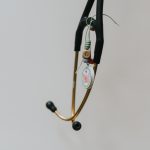Under Review: No
Issued by Council: April 1, 2019
Reissued by Council: Feb. 24, 2023
The scope of this standard is Safe Prescribing for Opioid Use Disorder. Management for acute/chronic pain and/or palliative care are not included under this standard.
Note: a glossary of terms can be found at the end of this document. Glossary terms are indicated in teal with a “G” throughout this document.
PREAMBLE
OUD is one of the most challenging forms of addiction and a major contributing factor to the rise in opioid-related morbidity and mortality. In recent years, the non-medical use of pharmaceutical opioids and the emergence of highly potent, illegally manufactured opioids have increasingly impacted the landscape of opioid use.
Effective Oct. 5, 2022, the Government of Alberta introduced new requirements for narcotic transition services (NTS) G through an amendment to the Mental Health Services Protection Regulation (Regulation), which are enacted under the Mental Health Services Protection Act. Regulated members are responsible for informing themselves and complying with the legislative requirements that apply to their practice.
Alberta Health Services (AHS) is the only service provider licensed by Alberta Health to provide NTS in the province. The amendment allows the use of methadone and slow release oral morphine for the treatment of opioid use disorder (OUD) G in all settings. The Regulation prohibits the use of other full agonist opioid drugs G (e.g. hydromorphone, fentanyl and diacetylmorphine) for the treatment of OUD outside of NTS facilities. The use of full agonist opioid drugs for indications other than OUD (e.g., management of acute/chronic pain and/or palliative care) is not affected by the Regulation.
OUD is best conceptualized as a treatable chronic illness, which has the potential to be in sustained, long-term remission with appropriate treatment. For more information, refer to the Diagnostic and Statistical Manual (DSM-5) on Diagnostic Criteria for OUD.1
For the purpose of this standard, Opioid Agonist Treatment (OAT)G refers to full opioid agonist drugs for OUD treatment. This standard does not apply to the partial opioid agonistG or antagonist drug G options for OUD (e.g., buprenorophine/naloxone (Suboxone®), buprenorphine extended-release injection (Sublocade®) buprenorphine implant (Probuphine®), naltrexone (Revia®), etc.).
The intention of the standard is to provide regulated members with clear requirements that allow for safe and responsible management of OUD with evidence-based, full opioid agonist drugs. The standard is deliberately nonprescriptive in requiring use of specific treatment guidelines, as the treatment modalities for OUD are changing rapidly. Regulated members are expected to provide care based on the latest evidence-based guidelines and practices, and in compliance with the legislation.
For more information and guidance, please see the Advice to the Profession and other resources in the “Companion Resources” section at the end of this document.
STANDARD
- A regulated member who prescribes OAT must do so in accordance with evidence-based guidelines and practices2 for OUD treatment.
- A regulated member who INITIATES OAT must:
- have successfully completed an OUD workshop/course recognized by CPSA2;
- provide evidence of experiential training, supervision, mentorship and/or completion of an approved preceptorship-based course;
- have CPSA OAT prescribing approval to initiate G;
- as a condition of CPSA OAT prescribing approval to initiate, maintain competence in OAT through ongoing, relevant education as part of their mandatory Continuous Professional Development (CPD) cycle and provide evidence upon request;
- only initiate OAT for a patient in an appropriate setting with:
- access to medical laboratory services and pharmacy services;
- access to at least one other prescriber who is trained and approved to provide OAT, in accordance with the Continuity of Care standard of practice, if the initiating prescriber is absent or suspends their practice;
- access to Alberta prescription databases;
- the ability to refer patients to appropriate, multidisciplinary team support (e.g., social worker, addictions counselling); and
- other resources and services appropriate to the specific OAT provided;
- if transferring OAT maintenance to another prescriber with CPSA OAT prescribing approval:
- transfer care in accordance with the Transfer of Care standard of practice;
- provide the maintaining prescriber with an information checklist and a letter of support for maintaining OAT for the patient, with a copy of the letter to CPSA; and
- collaborate with the maintaining prescriber, other healthcare providers and multidisciplinary team members involved in the patient’s care.
- A regulated member who MAINTAINS G patients on OAT must:
- have knowledge of OAT pharmacology before accepting OAT maintenance for a patient;
- have a letter of support and information checklist from the initiating prescriber;
- have CPSA OAT prescribing approval to maintain G;
- at minimum, complete an OAT educational module or course recognized by CPSA2 within six months of acquiring CPSA approval;
- ensure another prescriber approved to maintain OAT is available, in accordance with the Continuity of Care standard of practice, if the maintaining prescriber is absent or suspends their practice;
- collaborate with the initiating prescriber or appropriate delegate, other healthcare providers and multidisciplinary team members involved in the patient’s care;
- have access to medical laboratory services and pharmacy services; and
- have access to Alberta prescription databases.
- A regulated member without CPSA OAT prescribing approval may prescribe OAT for a patient in an inpatient or correctional facility for a period no greater than:
- the duration of the patient’s stay or incarceration; and
- five (5) days or 120 hours following the patient’s discharge/release, for the purposes of transition of care.
- When prescribing OAT for a patient under clause 4, a regulated member without CPSA OAT prescribing approval must:
- specify in the OAT prescription that doses must be:
- daily; and
- witnessed when administered to the patient (and not provided for take-home unwitnessed use);
- ensure continuity of care by:
- notifying the patient’s community prescriber G of discharge/release; or
- f the patient does not have a community prescriber, make appropriate arrangements for transfer of care to another health care provider;
- consult with the patient’s current prescriber or appropriate delegate before:
- making any changes to the OAT prescription; or
- introducing any new medications with the potential to interact with OAT; and
- collaborate with those involved in the patient’s care at transitions between treatment settings, in accordance with the Continuity of Care standard of practice, including:
- the community prescriber;
- other regulated health professionals; and
- multidisciplinary team members.
- specify in the OAT prescription that doses must be:
- Notwithstanding subclause 5(c), regulated members without CPSA OAT prescribing approval may proceed without consulting the current prescriber if patients require urgent or emergent care.
- A regulated member who prescribes full agonist opioid drugs, for the treatment of OUD, must have either CPSA OAT prescribing approval to initiate or CPSA OAT prescribing approval to maintain.
- A regulated member who prescribes a full agonist opioid drug, other than methadone or slow-release oral morphine, for OUD treatment must do so within a program licenced by the government, as required by provincial regulation.3
GLOSSARY
Opioid Use Disorder (OUD): a medical condition defined by a problematic pattern of opioid use leading to clinically significant impairment or distress4.
Narcotic Transition Service (NTS): means services to treat OUD with one or more designated narcotic drugs (i.e., any full agonist opioid drug, with the exception of methadone or slow-release oral morphine). NTS does not include the use of designated narcotic drugs if medically indicated for the purpose of stabilizing a patient suffering from opioid withdrawal during the patient’s admission to an approved hospital for other indications5.
Full agonist opioid drugs: pharmaceutical agents which bind to and activate the mu-opioid receptors, preventing withdrawal symptoms to alleviate cravings (e.g., methadone, slow-release oral morphine, hydromorphone, fentanyl and diacetylmorphine).6
Opioid Agonist Therapy (OAT): the provision of medications to treat OUD.
Partial opioid agonists: pharmaceutical agents that bind to opioid receptors but activate them to a lesser degree than full opioid agonists (e.g., buprenorphine).
Antagonist drugs: pharmaceutical agents that block the activation of opioid receptors to treat OUD (e.g., naltrexone).6
CPSA OAT prescribing approval to initiate: CPSA approval provided to regulated members who have demonstrated successful completion of learning and experiential requirements (e.g., Alberta Opioid Dependency Treatment Virtual Training Program or other recognized workshop/coursework).7 These regulated members are able to initiate AND maintain patients on OAT.
Maintains: to continue to provide OAT to a patient who has been initiated and stabilized on OAT.
CPSA OAT prescribing approval to maintain: CPSA approval provided to regulated members who have demonstrated successful completion of learning requirements (i.e., modules 5 and 8 of the Alberta Opioid Dependency Treatment Virtual Training Program) and have received a letter of support from the patient’s OAT initiating prescriber.7 These regulated members are able to maintain patients on OAT; they are not able to initiate patients on OAT.
Community prescriber: for the purposes of this standard, this is defined as the initiating or maintaining prescriber who works in a community setting, including AHS Opioid Dependency Programs, an NTS, community ODP clinics or family physicians.
_________________________________________
1 DSM-5 Clinical Diagnostic Criteria for Opioid Use Disorder
2 Refer to Opioid Agonist Treatment Program for related standards of practice, advice to the profession, guidelines, and additional resources.
3 For more information, please refer to the Safe Prescribing for Opioid Use Disorder Advice to the Profession document.
4 DSM-5 Clinical Diagnostic Criteria for Opioid Use Disorder
5 Mental Health Service Protection Regulation (Jan. 16, 2023)
6 NIDA’s “How do medications to treat opioid use disorder work?” (Dec. 2021)
7 CPSA’s Opioid Agonist Treatment Program
Advice to the Profession
All ResourcesOther helpful CPSA resources
All ResourcesOther resources related to this standard
All ResourcesAlberta Health’s fact sheet on Narcotic Transition Services (NTS)
Alberta Health Click to view filesMental Health Service Protection Regulation
Alberta Government Click to view filesWise Prescribing and De-prescribing: Opioid Skills for the Frontline Clinician
University of Calgary Continuing Medical Education & Professional Development Click to view filesAbout the Standards of Practice
The CPSA Standards of Practice are the minimum standards of professional behaviour and ethical conduct expected of all physicians registered in Alberta. Standards of practice are enforceable under the Health Professions Act and will be referenced in the management of complaints and in discipline hearings.
Questions?
For questions or archived standards, policies and guidelines contact our Standards of Practice Advisor.






















